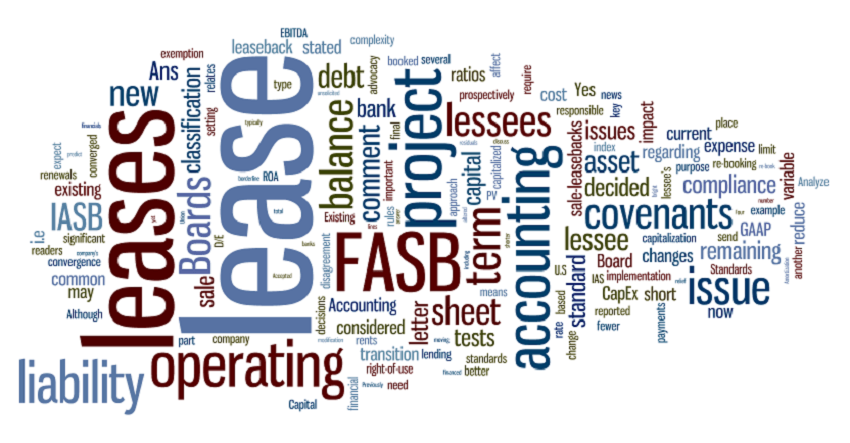When writing expert reports I am often faced with the task of carefully benchmarking an entity against its peers. Disputes often deal with alleged accounting failures of an entity to recognize, disclose, or perform some other activity appropriately. Alternatively, financial statement preparers, users of financial statements, and/or auditors may wish to assess the reasonableness of management’s accounting recognition and disclosures against other entities. For these reasons it is imperative that a careful benchmarking exercise be performed to assess the reasonableness of an entity’s accounting decisions in light of the decisions of peer entities. In this post I define peer entities as those entities that are most closely related to or aligned with the subject entity.
On the surface it may seem relatively straightforward to identify a peer group. However, when one peels back the onion the nuances begin to surface and, if not careful, practitioners may find themselves in a tough situation trying to defend their thought process in a rebuttal report, deposition or trial or trying to explain variances that prove to be irrelevant. Today’s post will discuss some helpful tips to consider when selecting an appropriate peer group for benchmarking purposes.
To begin, a practitioner should have sufficient knowledge and understanding of the entity’s business and the industry in which it operates. Following are some items to consider to test ones knowledge and understanding of an entity’s business environment, not in any particular order:
- What types of products or services does the entity offer?
- Are any of these products or services different from other entities within its industry?
- Does the entity operate in a regulated industry?
- Is the entity publicly traded, or are the entity’s financial statements publicly available?
- If so, what potential peer entities has the entity disclosed within its annual report (i.e., SEC Form 10-K) (more on this below)?
- Can one easily identify the Standard Industrial Classification (“SIC”) code of the entity (more on this below)? Or, can one identify at least one potential peer entity that is similar to the entity, whose SIC code is readily available?
- Do industry publications exist from a reputable source that may identify potential peer entities?
Screening considerations
Upon responding to the questions above, one focuses on a list of potential peer entities; however, it may still be necessary to screen the list further. I generally screen entities based on key financial metrics, which may include: assets, revenues, equity, net asset value, PP&E, headcount, or some other specific account or disclosure in the financial statements (depending on the nature of the research or litigation one is addressing).
Alternatively, one may look to segment disclosures in the financial statements, which often include disaggregated financial metrics based on geography, product line, or some other meaningful attribute. Furthermore, market capitalization may be meaningful; however, one should take caution with relying on this metric as it may be more volatile relative to other financial metrics.
In some cases, an entity may operate in a highly specialized industry. When this occurs and financial information of a direct competitor is not publicly available, one may consider selecting potential peer entities associated with the direct competitor that are upstream or downstream. In my view this is reasonable because upstream or downstream entities tend to have similar operations or business risks within the highly specialized industry.
Once a screening process is selected, one may also consider screening the same criteria for multiple periods to confirm that the selected screening criteria yield consistent results and, therefore, are reliable for benchmarking.
Annual Report Disclosures
SEC Regulation S-K Item 201(e) requires an SEC registrant to disclose a performance graph in its annual report (i.e., SEC Form 10-K filing). This performance graph is relevant in the context of benchmarking because, depending on its business, an SEC registrant is required to construct a “peer group index,” which may identify potential peer entities of interest. The SEC guidance stipulates, “If the registrant uses a peer issuer(s) comparison or comparison with issuer(s) with similar market capitalizations, the identity of those issuers must be disclosed and the returns of each component issuer of the group must be weighted according to the respective issuer’s stock market capitalization at the beginning of each period for which a return is indicated.”
Care should be taken when relying on the SEC registrant’s selected peer group as the SEC guidance states, “If the registrant does not select its peer issuer(s) on an industry or line-of-business basis, the registrant shall disclose the basis for its selection.” In the end, the judgments or assumptions applied by a practitioner in connection with a benchmarking exercise must be adequately considered and documented.
SIC Codes
The U.S. Bureau of Labor Statistics developed SIC codes to indicate an entity’s type of business. SIC codes are categorized by major industry and sub-industry. Public entities that file statements with the SEC include their SIC codes within their filings, which can be used for comparative analysis.
Application
The manner of execution of the benchmarking exercise can strengthen one’s position in a dispute. Conversely, if left to inexperienced practitioners or lack of careful consideration, this exercise can create more problems than it was designed to solve. I’ve worked on a number of disputes wherein a robust benchmarking exercise was applied. In my experience well thought out benchmarking exercises have consistently played a critical role in persuasion of the arguments and opinions presented in the dispute.
In one such case a key allegation brought by an opposing expert dealt with inadequate accounting and disclosure of a particular FASB interpretation (“FIN”). My team carefully selected a peer group for comparison and we successfully demonstrated that diversity in practice existed with respect to peer entities complying with the disclosure requirements, which findings supported my client’s position.
In closing, I wish to reiterate that judgments or assumptions applied by a practitioner in connection with a benchmarking exercise must be adequately considered and documented for a successful outcome to occur.
Photo credit – Craig Jewell Photography




